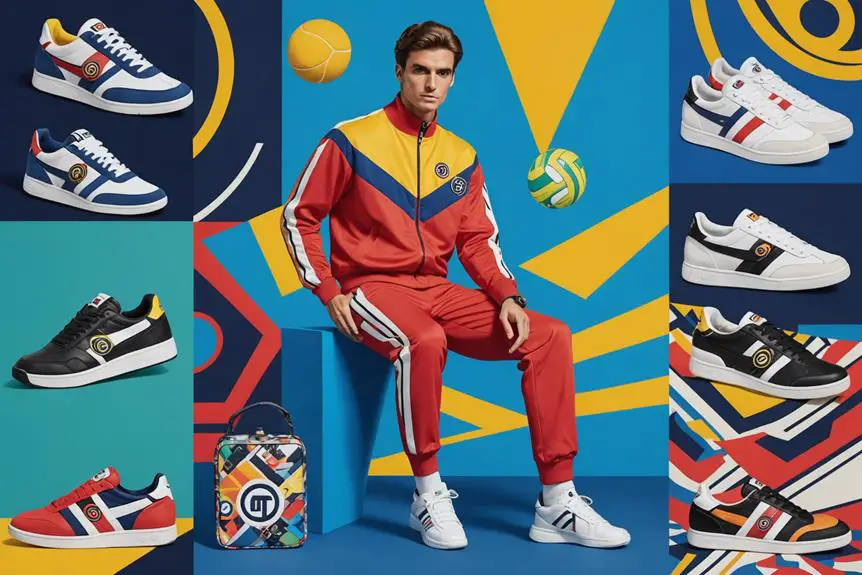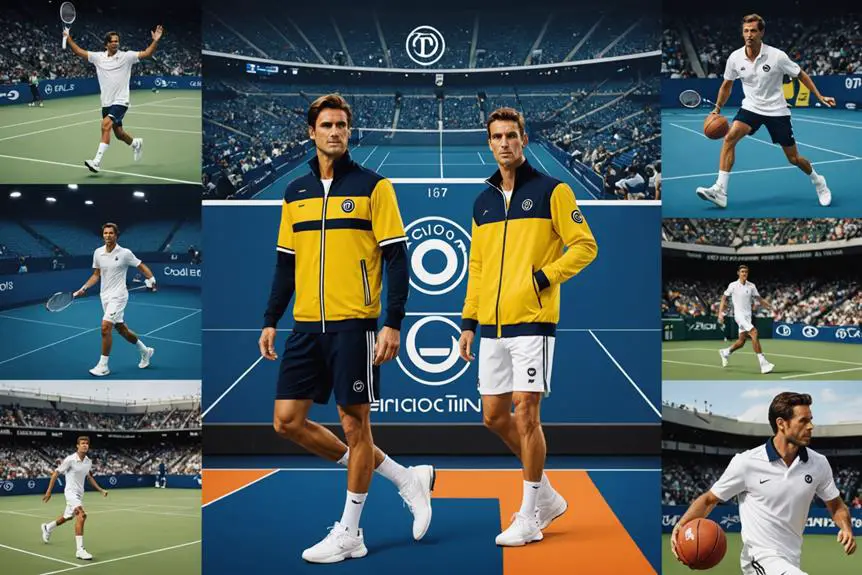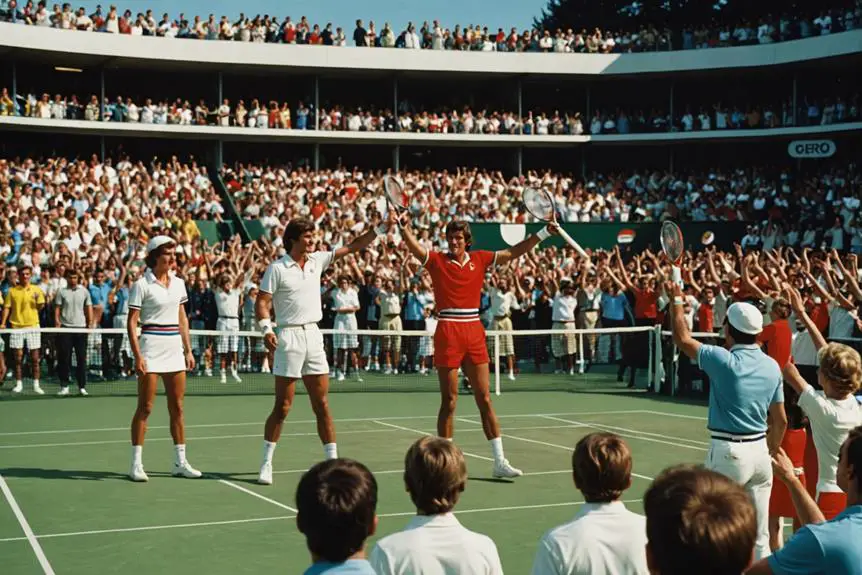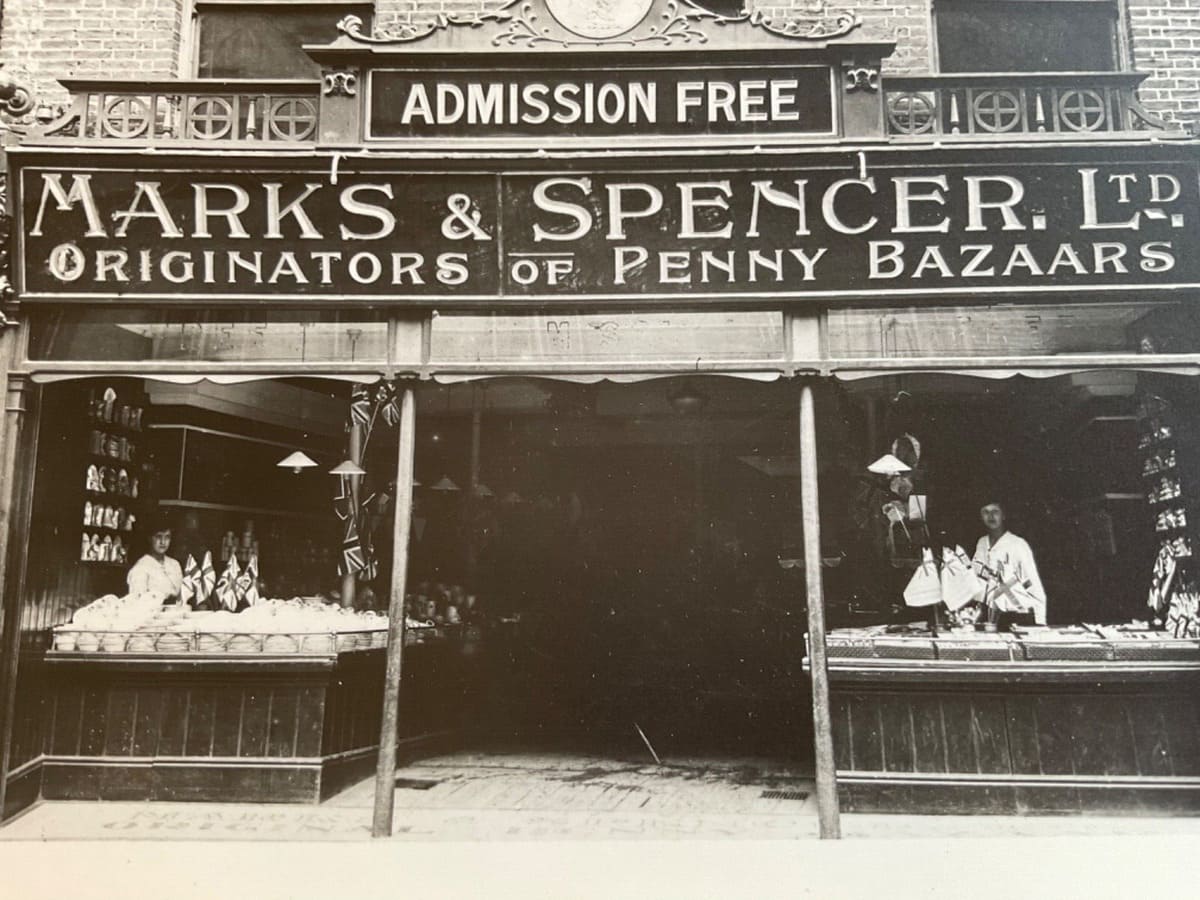Sergio Tacchini's history highlights a transformative evolution in fashion, beginning in 1966 when the tennis champion introduced vibrant colors to a predominantly white tennis attire landscape. The brand quickly expanded its influence, embracing broader lifestyles and connecting with youth culture as well as key athletes like John McEnroe and Martina Navratilova. The chic designer tracksuits became emblematic of British subculture and hip-hop, solidifying the brand's cultural significance. Despite facing financial challenges, its diversification into various sports reinforced its identity in the fashion world. Tacchini's legacy is a harmonious blend of style and athleticism, leaving a lasting impact on generations. A deeper exploration reveals the brand's profound influence on the intersection of fashion and sports.
Brand Origins

Founded in 1966 by the Italian tennis champion Sergio Tacchini, the brand emerged with a clear vision to revolutionize the tennis apparel market by introducing vibrant colors to a largely white landscape. This innovative approach not only differentiated the brand in a conservative sport but also laid the groundwork for its lasting impact on sportswear. By collaborating with legendary athletes like John McEnroe and Martina Navratilova, Sergio Tacchini embodied a spirited ethos that resonated with fans and players alike.
The brand's iconic logo, featuring intertwining initials 'S' and 'T' resembling a tennis ball, has become a symbol of its identity in the sportswear industry. Over the years, Sergio Tacchini evolved from a tennis-focused label into a broader lifestyle brand without sacrificing its commitment to quality craftsmanship and authenticity. This adaptability allowed it to tap into youthful subcultures, particularly during the late 1970s and 1980s, cementing its status in both the sports and fashion arenas. The vibrant colors and unique designs not only appealed to athletes but also captured the imagination of a generation, making Sergio Tacchini a pivotal player in sports fashion history.
Key Athletes
Throughout its history, Sergio Tacchini has established itself as a significant player in the sportswear industry by aligning with key athletes who embody the brand's vibrant spirit and competitive edge. You can see this alignment through legendary tennis players like John McEnroe, who captured seven Grand Slam titles and reached ATP World No. 1 in 1980 while sporting the brand. Martina Navratilova, another iconic figure, wore Sergio Tacchini during her impressive career, which included 18 Grand Slam singles titles, making her not only a champion on the court but also a vocal advocate for gay rights.
In 2001, Goran Ivanišević made headlines by winning Wimbledon as a wildcard competitor in Sergio Tacchini apparel, showcasing the brand's ability to support athletes in extraordinary moments. Additionally, Novak Djokovic wore Sergio Tacchini gear from 2009 to 2012, culminating in his career Grand Slam in 2016 and a total of 16 Grand Slam titles overall. Finally, Pete Sampras, with his 14 Grand Slam titles, further solidified the brand's esteemed status in sports apparel. These athletes not only highlighted Sergio Tacchini's commitment to excellence but also elevated its presence in the competitive sportswear market.
Cultural Influence

The cultural influence of Sergio Tacchini extends far beyond the tennis court, marking its territory in various subcultures and fashion movements. In the late 1970s and 1980s, the brand's stylish designer tracksuits became a cornerstone of British youth subculture known as casuals. These tracksuits weren't just athletic wear; they symbolized rebellion and individuality, linking the brand to football terrace culture. This era of fashion parallels the evolution seen in other brands like True Religion, where unique designs and logos played a significant role in identity and market relevance, as reflected in the brand's logo evolution.
Notably, Sergio Tacchini gained traction within hip hop culture, as iconic rappers like Rakim and LL Cool J donned the brand, embedding it into urban fashion. This cross-pollination further solidified its appeal among youth seeking fashionable expressions.
Key aspects of Sergio Tacchini's cultural influence include:
- The iconic ST logo representing both tennis excellence and street style.
- Vibrant and colorful designs that broke the mold of traditional all-white tennis apparel.
- A reflection of individuality in a landscape often dominated by conformity.
- The brand's role in shaping fashion trends within both sports and casual wear.
Ultimately, Sergio Tacchini represents a blend of sport and style, influencing generations and transcending its athletic origins.
Major Tennis Events
In the world of tennis, Sergio Tacchini has carved out a significant presence by sponsoring players who've left indelible marks on the sport's history. This brand has been synonymous with success at major tennis events, particularly during the golden eras of its sponsored athletes. The brand's innovative marketing strategies, much like those seen with AND1's cultural resonance, have played a vital role in its prominence. Mats Wilander, in 1988, clinched three Grand Slam titles, including the Australian Open, French Open, and US Open, while proudly donning Sergio Tacchini apparel.
Gabriela Sabatini made her mark in 1990 by winning the US Open, defeating the legendary Steffi Graf, further elevating the brand's profile. Goran Ivanišević, wearing Sergio Tacchini, stunned the world in 2001 as the only wildcard to triumph at Wimbledon. Similarly, Sergi Bruguera achieved back-to-back French Open titles in 1993, reinforcing the brand's connection to elite performance.
Most importantly, Novak Djokovic's tenure with Sergio Tacchini saw him secure multiple Grand Slam titles, including the Australian Open and Wimbledon in 2011. Each of these athletes not only showcased their skills on the court but also embodied the spirit of Sergio Tacchini, solidifying its reputation in the annals of tennis history.
Expansion Into Other Sports

With a strategic vision that extended beyond the tennis court, Sergio Tacchini made significant strides into various sports during the 1980s. While the brand maintained its tennis roots, it recognized the potential in diversifying its portfolio. This led to a commitment to promoting basketball, skiing, and golf, allowing the brand to reach a broader audience.
- Sponsored the Italian national basketball team during the 1983 European Cup.
- Supported FIS Alpine Ski World Cup champions like Pirmin Zurbriggen in the early 1990s.
- Collaborated with Formula One legend Ayrton Senna, enhancing its presence in motorsports.
- Adapted to increasing competition from giants like Nike and Adidas.
These strategic partnerships not only bolstered Sergio Tacchini's reputation but also showcased its adaptability in a rapidly evolving landscape. The brand's involvement in basketball and skiing highlighted its ambition to appeal to fans of diverse sports, reinforcing its identity as a prominent athletic brand. By aligning with iconic athletes and events, Sergio Tacchini positioned itself as a dynamic player in an industry facing fierce competition, continuing to innovate and expand its influence across multiple athletic markets.
Business Overview
Sergio Tacchini's journey reflects a blend of innovation and resilience in the competitive landscape of sportswear. Founded in 1966 by the Italian tennis champion, the brand initially focused on stylish tenniswear, carving out a niche in a saturated market. However, challenges arose, culminating in bankruptcy in 2007. The acquisition by Billy Ngok in 2008 marked a pivotal moment for revitalization, steering the brand toward a new direction.
By 2011, Sergio Tacchini reported annual revenue of less than €50 million (approximately US$71 million), prompting aggressive expansion plans, including the opening of 120 shops in mainland China. This ambitious strategy aimed to tap into the growing demand for sportswear in emerging markets. After a shift in ownership in 2019, Stefano Maroni took the helm as CEO, focusing on relaunching the brand as a global sportswear contender.
The expansion of Sergio Tacchini's product range beyond tennis to include apparel for skiing, golf, and basketball illustrates its commitment to versatility in sportswear. This strategic diversification not only strengthens brand identity but also positions Sergio Tacchini to compete effectively in a dynamic industry.
Celebrity Endorsements

Celebrity endorsements have become a crucial element in shaping the identity of Sergio Tacchini, linking the brand to both elite athletes and cultural icons. The strategic partnerships with tennis legends like John McEnroe, Martina Navratilova, and Novak Djokovic have greatly boosted the brand's visibility in sports apparel, particularly during its rise in the 1970s and 80s when it became a favorite among celebrities. Djokovic's 10-year deal, although ending prematurely, showcased the brand's ambition to align with top-tier talent. Additionally, endorsements in the hip-hop community, featuring influential artists such as Rakim, LL Cool J, Jay Z, and Travis Scott, have enhanced Sergio Tacchini's cultural relevance in fashion. These collaborations have helped the brand transcend traditional sportswear, appealing to younger audiences drawn to retro fashion trends and its nostalgic appeal.
Key highlights of Sergio Tacchini's celebrity endorsements include:
- Partnerships with tennis legends reinforcing its credibility in sports.
- Collaborations with hip-hop artists enhancing cultural relevance.
- Sponsorship of the Italian national basketball team, broadening its reach.
- A resurgence in popularity linked to retro fashion, capturing a new market.
Through these endorsements, Sergio Tacchini has managed to maintain a strong presence across various sports, proving that celebrity influence is essential to its identity and ongoing success.
The Man Behind the Brand
Rising from the courts of Italy, Sergio Tacchini not only carved out a successful tennis career but also revolutionized the sports fashion landscape. Born in September 1938, you'd find him turning professional at the Tennis Club of Milan at just 17. His triumph in the 1960 Italian Championship against Nicola Pietrangeli was a pivotal moment, solidifying his status as a formidable professional tennis player. After a commendable career punctuated by five singles victories in the Davis Cup, he retired in 1968.
In 1966, Tacchini launched his clothing brand, breaking conventions by introducing vibrant colors to the traditionally monochromatic tennis apparel. This bold move not only reflected his unique aesthetic but also transformed sports fashion, allowing players to express their individuality. His influence is unmistakable, inspiring icons like Andre Agassi and Serena Williams to embrace style in their own right. Tacchini's legacy transcends mere athleticism; he redefined how athletes engage with fashion, merging functionality with flair. The Sergio Tacchini brand stands as a testament to his vision, embodying the spirit of innovation and self-expression in sports fashion.
Frequently Asked Questions
Why Is Sergio Tacchini Famous?
Sergio Tacchini's fame stems from its vibrant sports apparel, innovative designs, and iconic sponsorships, particularly in tennis. You'll recognize the brand's influence in both athletic and streetwear fashion, marking its cultural significance across generations.
What Is the History of Tacchini?
You'll find Tacchini's history marked by innovative designs and strategic partnerships. Founded in 1966, it grew through tennis icons before facing challenges, ultimately reviving its brand by embracing modern trends and expanding into lifestyle apparel.
What Happened to Sergio Tacchini?
Sergio Tacchini faced significant challenges, including bankruptcy in 2007. After its acquisition in 2008, the brand revitalized through celebrity collaborations and endorsements, ultimately expanding its global reach while competing against larger sportswear companies.
When Did Sergio Tacchini Come Out?
Sergio Tacchini launched in 1966, aiming to revolutionize tennis apparel. You'll notice its vibrant colors contrasted sharply with the traditional white attire, marking a significant shift in sports fashion that appealed to athletes and spectators alike.




